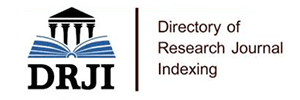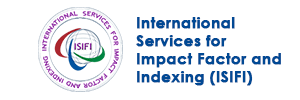
Journal Basic Info
**Impact Factor calculated based on Google Scholar Citations. Please contact us for any more details.Major Scope
- Breast Cancer
- Colorectal Cancer
- Sarcomas
- Kidney Cancer
- General Oncology
- Lung Cancers
- Gastrointestinal Cancer
- Neoadjuvant Therapy
Abstract
Citation: Clin Oncol. 2021;6(1):1802.DOI: 10.25107/2474-1663.1802
CEA and CA19-9 Levels and KRAS Mutation Status as Biomarkers for Colorectal Cancer
Subki AH, Alghamdi TA, Butt NS, Alqazlan MS, Alkahtani AM, Aziz MA and Alsiary RA
Department of Internal Medicine, King Faisal Specialist Hospital and Research Centre, Saudi Arabia
Colorectal Cancer Research Program, Saudi Arabia/King Saud bin Abdulaziz University for Health Sciences, Saudi Arabia
Department of Biostatistics, King Abdulaziz University, Saudi Arabia
Department Anatomical Pathology, King Faisal Specialists Hospital, Saudi Arabia
Royal Commission Yanbu Medical Center, Saudi Arabia
*Correspondance to: Rawiah A Alsiary
PDF Full Text Research Article | Open Access
Abstract:
Aim: We aimed to investigate the associations among KRAS mutation, carcinoembryonic Antigen (CEA), and Cancer Antigen 19-9 (CA19-9) levels, and the clinicopathological features of Colorectal Cancer (CRC) patients.
Methods: We conducted a retrospective cohort study, involving 183 CRC patients, at Princess Norah Oncology Center (PNOC), King Abdulaziz Medical City, Jeddah, Saudi Arabia, from 2012 to 2015.
Result: A strong association was identified between CA19-9 levels and KRAS mutational status and between CA19-9 and CEA levels, in CRC patients (p=0.001 and p<0.0001, respectively). Large tumor size was associated with abnormally high CEA levels (p=0.029). Furthermore, young patients (<45 years) primarily expressed wild-type KRAS (p=0.013). The levels of CA19-9 and CEA were found to increase with increasing tumor stage (p<0.0001 and p=0.001, respectively). Mutated KRAS and abnormal CEA levels were associated with lymph node involvement (p=0.054 and p=0.014, respectively). The most common sites of distant metastases were the liver and lung in CRC patients with abnormal serum CA19-9 and CEA levels. Kaplan-Meier survival analysis showed that patients with high CA19-9 levels have shorter survival times than patients with normal CA19-9 levels (p<0.0001). Significant effects of CEA19-9 levels on the detection of KRAS mutations were analyzed by multivariate regression analysis (p<0.001).
Conclusion: This study provided new insights into the important roles played by CA19-9 and CEA during CRC progression and suggested that they may serve as useful biomarkers in CRC management.
Strengths and limitations of this study
- This is one of very few studies that assessed biomarkers of CRC among the Saudi population.
- This is one of the first studies to determine the independent predictors of the KRAS mutation patients in Saudi Arabia. The results of this study demonstrate that CEA and CA19-9 levels can be used to indicate KRAS mutation status and can be used as surrogate biomarkers.
- The sample size was limited to a single centre. A Larger sample size ensures adequate statistical power to detect even a small effect of interest.
- The study is retrospective, so we were not able to obtain more information from the participants.
Keywords:
KRAS; Mutation; CEA; CA19-9; Hemoglobin; Colorectal cancer
Cite the Article:
Subki AH, Alghamdi TA, Butt NS, Alqazlan MS, Alkahtani AM, Aziz MA, et al. CEA and CA19-9 Levels and KRAS Mutation Status as Biomarkers for Colorectal Cancer. Clin Oncol. 2021;6:1802..













